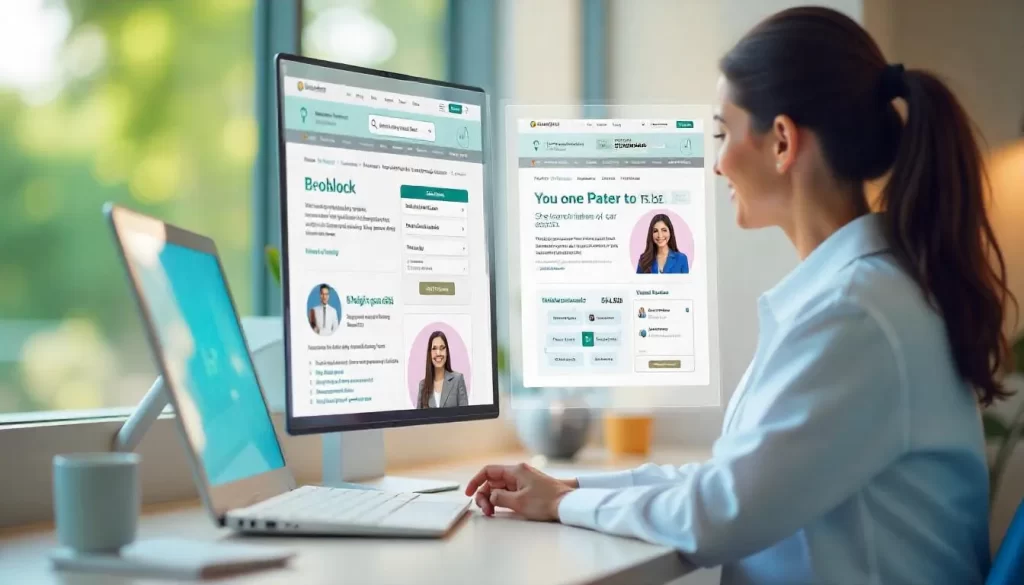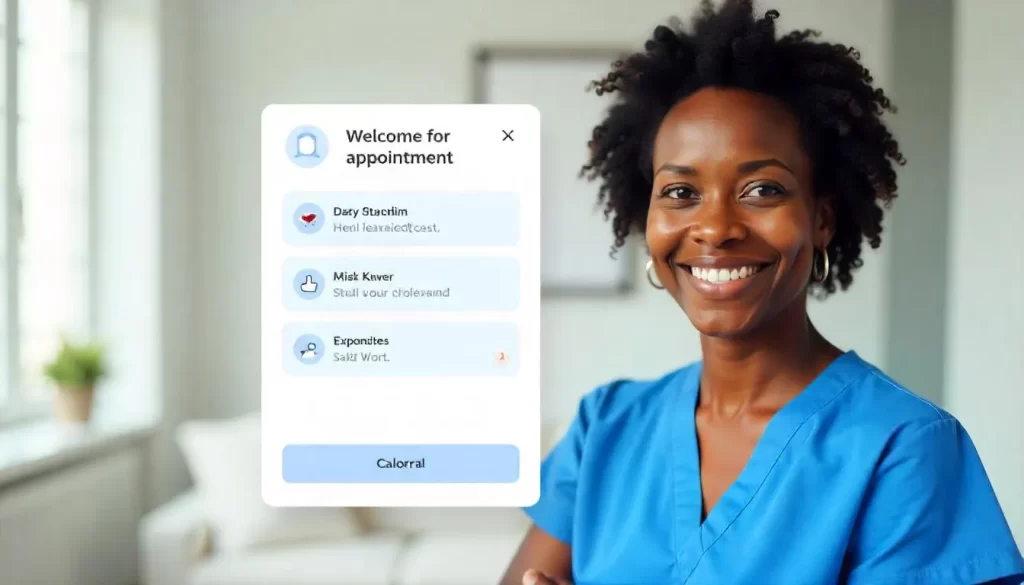Turn Website Visitors into Booked Appointments for Your Dental Practice
Driving traffic to your dental website is only half the battle. The real goal is to convert those visitors into booked appointments. If you’re attracting potential patients but they’re not following through with scheduling, you’re missing out on valuable opportunities. The key to turning website traffic into booked appointments lies in creating a smooth, intuitive experience that encourages visitors to take action.
Let’s explore the steps you can take to optimize your website for higher conversion rates and ensure visitors are booking appointments.
Lead Generation & Conversion Optimization for Dental Websites
Simplifying the Booking Process – Make It Effortless
To transform website visitors into appointments, the booking process needs to be as straightforward as possible. Visitors should not encounter friction or confusion when trying to schedule an appointment. Offering an online booking option that’s easy to find and use will increase the chances of visitors following through.
Expert Insight: A complex booking process can discourage patients from completing the action. When patients visit your site looking for dental services, they want to book quickly without hassle. Streamlining this process with an integrated online scheduler ensures that they don’t leave your site in frustration.

Related Posts
- Content Strategy for Dental Website Pages
- Latest Dental Website Design Trends That Attract and Convert
- Turn Visitors into Booked Appointments
Key Features for a Seamless Booking Experience:
- Online Scheduling Integration: Allow visitors to pick their appointment time directly from your website.
- Instant Confirmation: Let visitors know their booking is successful immediately with confirmation emails or texts.
- Mobile-Friendly Booking: Ensure your booking system works perfectly on smartphones, as most users access websites from mobile devices.
Effective CTAs – Clear, Action-Oriented, and Positioned Well
The CTA (Call to Action) is one of the most important elements in driving conversions. A well-designed CTA will guide visitors toward making an appointment or taking the next step, such as filling out a contact form. Without a clear CTA, visitors may leave your site without doing anything.
Expert Insight: Your CTA should be visible, compelling, and action-oriented. Using phrases like “Book Now,” “Schedule Today,” or “Get Started” can increase click-through rates. Ensure CTAs are strategically placed across your site—on the homepage, within blog posts, and on service pages.
Best Practices for Crafting Effective CTAs:
- Placement: Position CTAs where users are most likely to take action, such as after reading an informative page or service description.
- Color & Design: Make your CTA buttons stand out by using contrasting colors that catch the eye.
- Clear Messaging: Use simple, direct language that tells visitors exactly what action to take.
Optimizing Lead Forms – Gather Just What You Need
Lead forms are another crucial component in converting website visitors into patients. You want to collect enough information to follow up, but you also don’t want to overwhelm visitors with long, complicated forms. Simplicity and clarity are key to increasing form submission rates.
Expert Insight: Keep your lead forms concise and focus only on essential fields. The more fields you have, the less likely visitors will fill them out. For initial contact forms, ask for basic details like name, contact info, and the reason for the visit.
Best Practices for Lead Forms:
- Keep It Short: Limit the number of fields to 3-5 to make the form as quick and easy as possible.
- Offer Incentives: Consider offering a free consultation or discount for visitors who fill out the form to increase submission rates.
- Make Forms Accessible: Ensure forms are easy to access from any page on your website, especially mobile-friendly.
Patient Funnels – Guide Visitors Toward Booking
The patient funnel is the journey your visitors take from their first visit to your website all the way to booking an appointment. This process needs to be clear and engaging, so visitors don’t get lost or distracted. By providing the right information at the right time, you can guide them down the funnel to become paying patients.
Expert Insight: Every step of the funnel should make it easier for visitors to take the next action. From initial discovery to learning about your services to finally booking an appointment, each stage should encourage further engagement without overwhelming them with information.
Key Stages of a Patient Funnel:
- Awareness: Visitors land on your website after searching for dental services or seeing an ad. This is where your homepage and introductory content come in.
- Consideration: Visitors explore service pages and read about treatments, patient testimonials, and FAQs. Provide value and address their pain points to guide them to the next stage.
- Action: At this stage, visitors are ready to schedule an appointment. Provide clear CTAs and an easy-to-use online booking tool to finalize the conversion.
Lead Tracking – Understanding Visitor Behavior
Tracking lead behavior helps you understand how visitors interact with your website and where you’re losing them in the conversion process. By tracking which pages they visit, how long they stay, and when they leave, you can pinpoint areas for improvement.
Expert Insight: Using tools like Google Analytics and heatmaps, you can gain valuable insights into your visitors’ actions. This data helps you optimize your website and make changes that increase your chances of conversion.
Lead Tracking Tools to Consider:
- Google Analytics: Understand how users are engaging with your site and where they drop off.
- Heatmaps: Use tools like Hotjar to see where visitors are clicking and scrolling, helping you optimize CTA placement and content.
- Conversion Funnels: These tools help track the steps visitors take before booking, showing where you need to improve your site’s flow.
Chat Widgets – Engage Visitors in Real Time
Live chat widgets or chatbots provide an immediate way to connect with visitors. Many visitors prefer real-time assistance to get answers to their questions quickly, especially when they’re considering booking an appointment.
Expert Insight: Implementing a live chat feature allows your practice to provide immediate responses to questions about availability, services, or insurance details. This helps build trust and encourages visitors to take the next step toward booking.
Best Practices for Chat Widgets:
- Proactive Engagement: Use automated chat prompts to engage visitors after they’ve been on your page for a few seconds, offering help or information.
- Availability: Ensure that live chat is available during business hours and set up an automated system for off-hours to answer basic inquiries.
- Personalized Interactions: Make sure that responses sound human and relatable, not robotic, to foster trust.
Patient Testimonials – Show Real Results
Testimonials are one of the most powerful ways to build trust with new visitors. When patients share their positive experiences with your practice, it reassures potential patients and helps them make the decision to book an appointment.
Expert Insight: Testimonials are a form of social proof—they show new visitors that others have had great experiences with your practice. Featuring testimonials prominently on your homepage, service pages, and booking page can significantly boost conversions.
Where to Display Testimonials:
- Homepage: Show a few key testimonials to capture attention immediately.
- Service Pages: Include testimonials related to specific treatments or services to provide targeted proof of your expertise.
- Booking Page: Display testimonials on the booking page to help reassure visitors right before they confirm their appointment.

Related Posts
- Why Most Dental Website Traffic Comes from Mobile and How to Optimize
- Adapting Design to Specific Practice Types
- How to Build or Access a Professional Site on a Budget
Turning Visitors into Booked Appointments
Turning visitors into booked appointments on your dental website isn’t just about having great content. It’s about providing an optimized user experience, using clear CTAs, making the booking process simple, and offering real-time engagement. By focusing on conversion strategies like lead forms, patient funnels, and tracking, your website can transform traffic into patients.
Key Takeaways:
- Streamlined Booking Process: Make the scheduling process easy with online scheduling and immediate confirmation.
- Effective CTAs: Use action-oriented CTAs that are strategically placed across your site.
- Lead Forms: Keep forms simple and incentivize visitors to provide their information.
- Patient Funnels: Guide visitors through a clear journey from awareness to appointment booking.
- Chat Widgets & Testimonials: Use live chat to answer questions instantly and showcase testimonials to build trust.
FAQs:
How do I turn my website visitors into patients?
By offering clear CTAs, a simple booking process, lead forms, and live chat, you make it easy for visitors to convert into patients.
What should be included in a dental website’s lead form?
Lead forms should ask for basic information like name, contact details, and reason for the visit. Keep it short to encourage submissions.
How can I track the effectiveness of my website’s conversion strategy?
Use tools like Google Analytics and heatmaps to monitor user behavior and identify areas where you can improve conversion rates.
Why are testimonials important for dental websites?
Testimonials help build trust with new visitors by showcasing positive experiences from other patients, making them more likely to book an appointment.
